How to make an ice block - ice sculpture
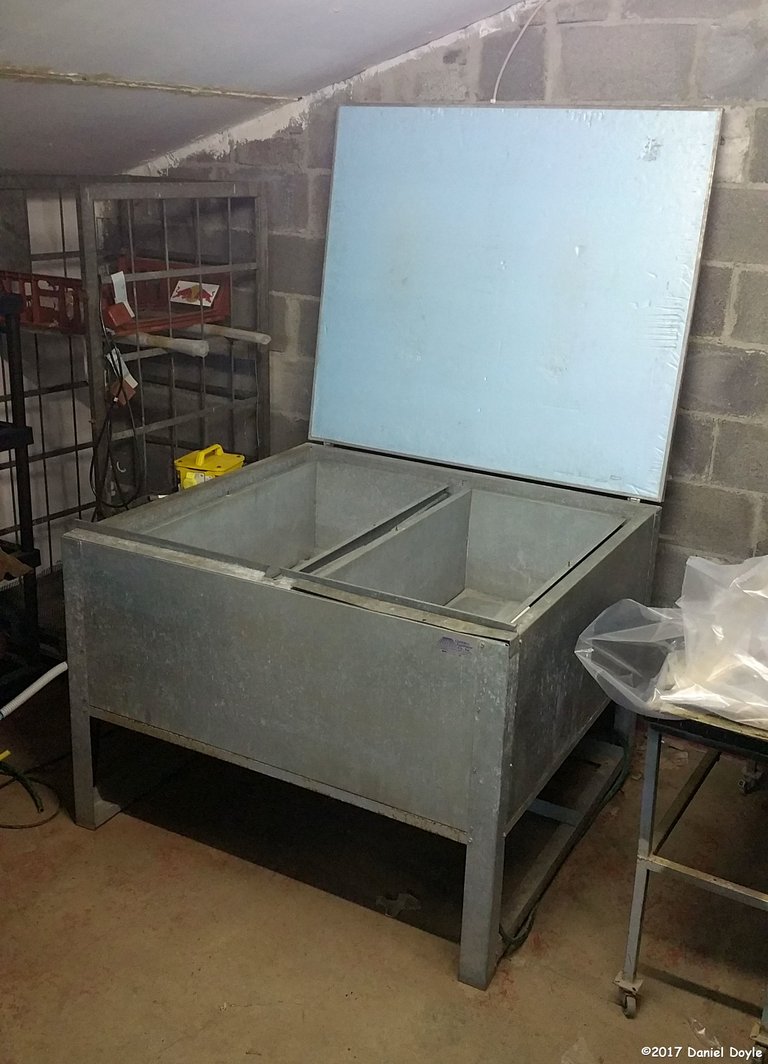
In my last post, I shared a small ice sculpture I made for an arts festival in Casel, Ireland. It wasn't one of my best sculptures (I hope!) due to the sweltering heat of the day but it was done and deserved its own little post.
I did have a question from @artist-freepae regarding where I got the ice from. It was a good question as Ireland is not known for its freezing climate. The truth of the matter is that I make my own.
Anyone with any experience with ice sculpting will know that this is a thing and interestingly it seems like a closely guarded secret as to how it is actually made. Well, dear readers, I am here today to lift the veil and expose the cold hard truth about how sculpting ice is actually produced and it will probably bore the pants off you.
Of course, you can work in natural ice if you can get it. But more and more this seems to only happen in countries that are guaranteed a nice cold winter. A bit of a rarity these days. Working with ice cut from a lake is really nice, as the material has a lot of input into what can and can't be made. Lake ice is usually not so clear due to snow build-up and variations in temperature, which can fracture the crystals. You will also probably find other matter in the ice, from silt to leaves or even fish.
Here is a little clip of guys in Siberia getting some ice from a lake (the clip starts around 2 Mins in)
When it comes to man-made ice you would probably think that it is made in large ice trays, the same way that drinking ice cubes are made but this is mostly wrong, The freezing of course is there but if you ever looked closely at an ice cube you will see that it is not clear. This is because just putting water in a freezer means it freezes from the outside in and because ice expands as it freezes and is actually less dense than in liquid form it will cause cracks and fissures to appear. These elements refract and bounce the light around so it will not be clear.
Lake, and river ice are different as the underlying water is able to flow as it gradually freezes and so, you get clearer ice except for bubbles and the layers of snow that from on the surface. Usually if you cut this off there will be more clarity.

So, how are man-made ice blocks made?
I am not sure who invented the process but the most common ice block makers come from a company called Clinebell in the Americas. It is a simple enough machine really and the main trick is to keep the water moving as it freezes and unlike in nature, it freezes from the bottom up. Giving room for the ice to expand and allowing all the bubbles and sediment to float to the surface..
Underneath a large Aluminium or Alluminumimum as the Americans pronounce it plate is a copper element with glycol running through and back to the compressor and condenser much like would be in your freezer.
On top of this are spring-loaded steel sheet walls that form the mold for your block. It is all sealed inside an insulated box with a lid.
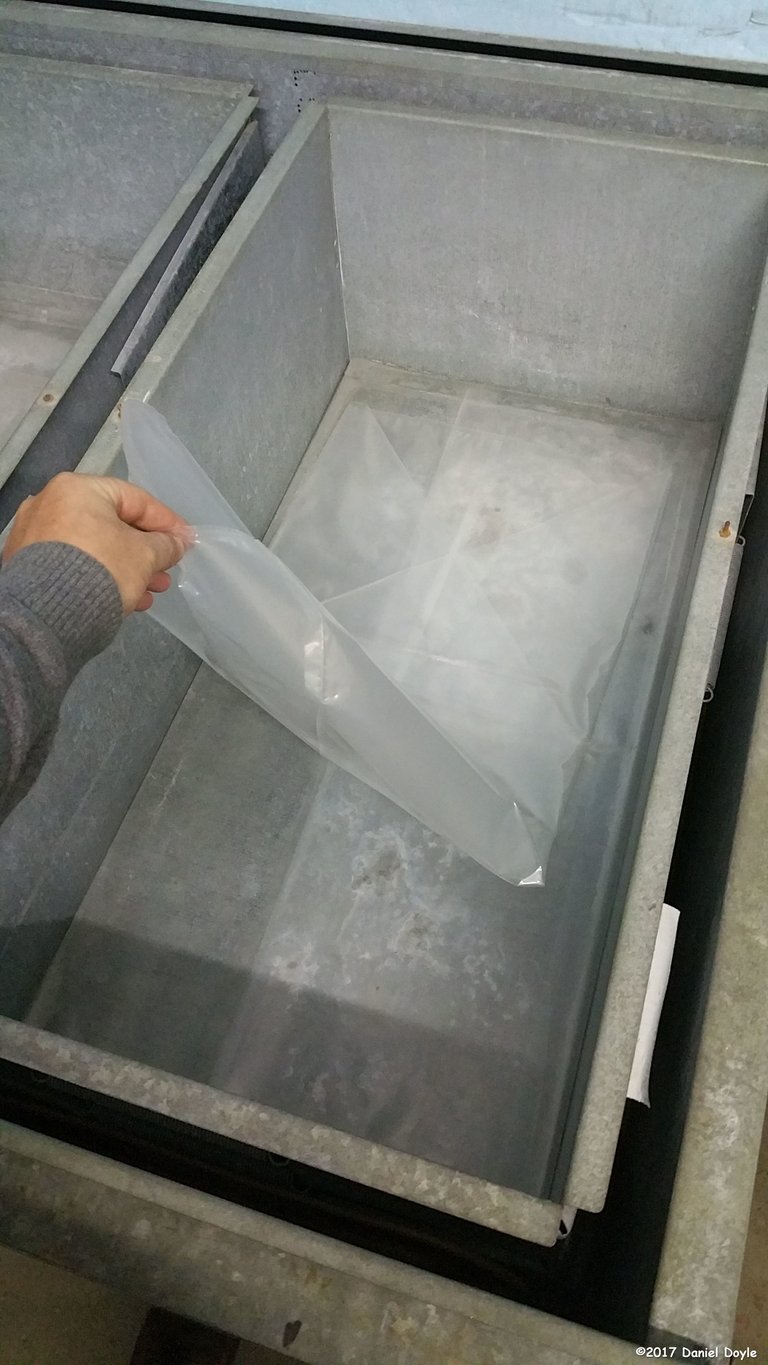
The spring-loaded walls are quite ridged but give a little to the expanding ice and can be prised apart to release the block when it is frozen. Inside this, you place a sealed plastic liner which keeps the water in position.
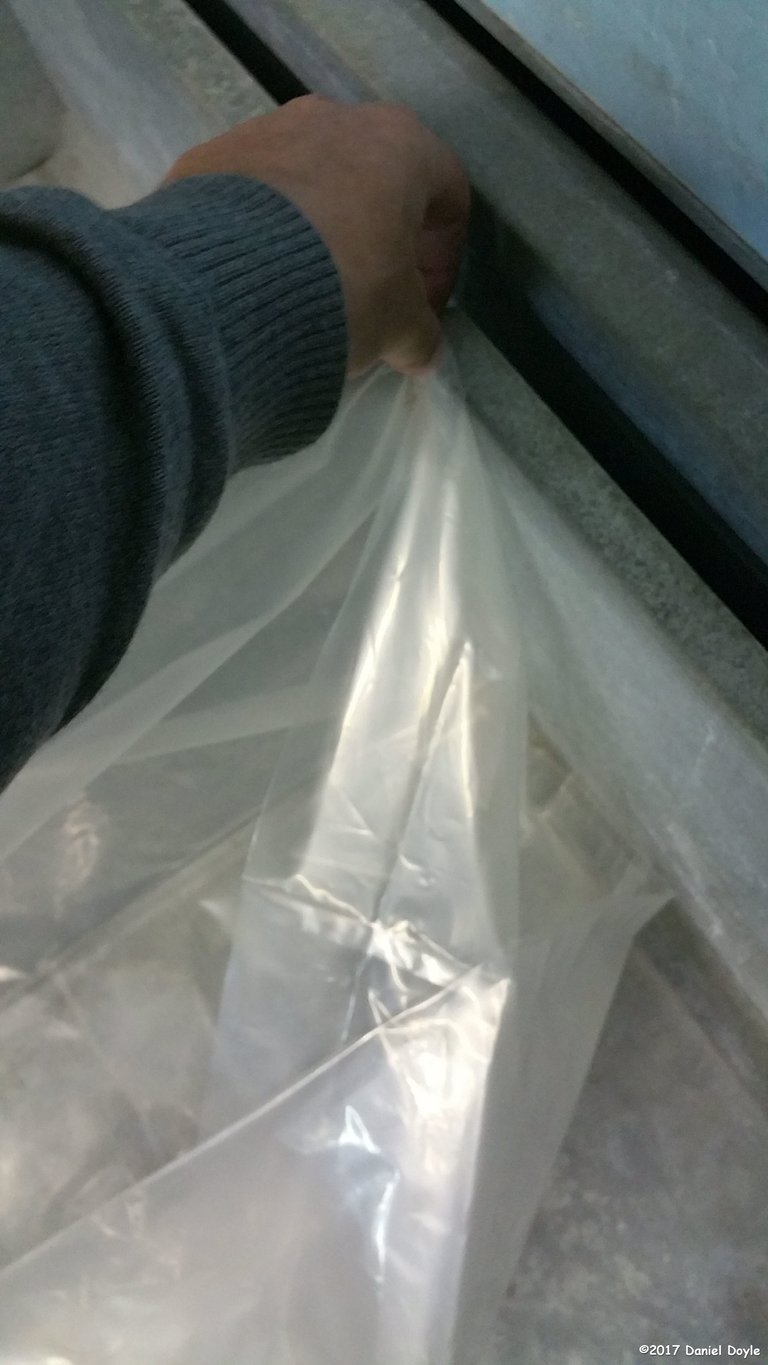
It is hooked around the edges and held it in place by a little lip.
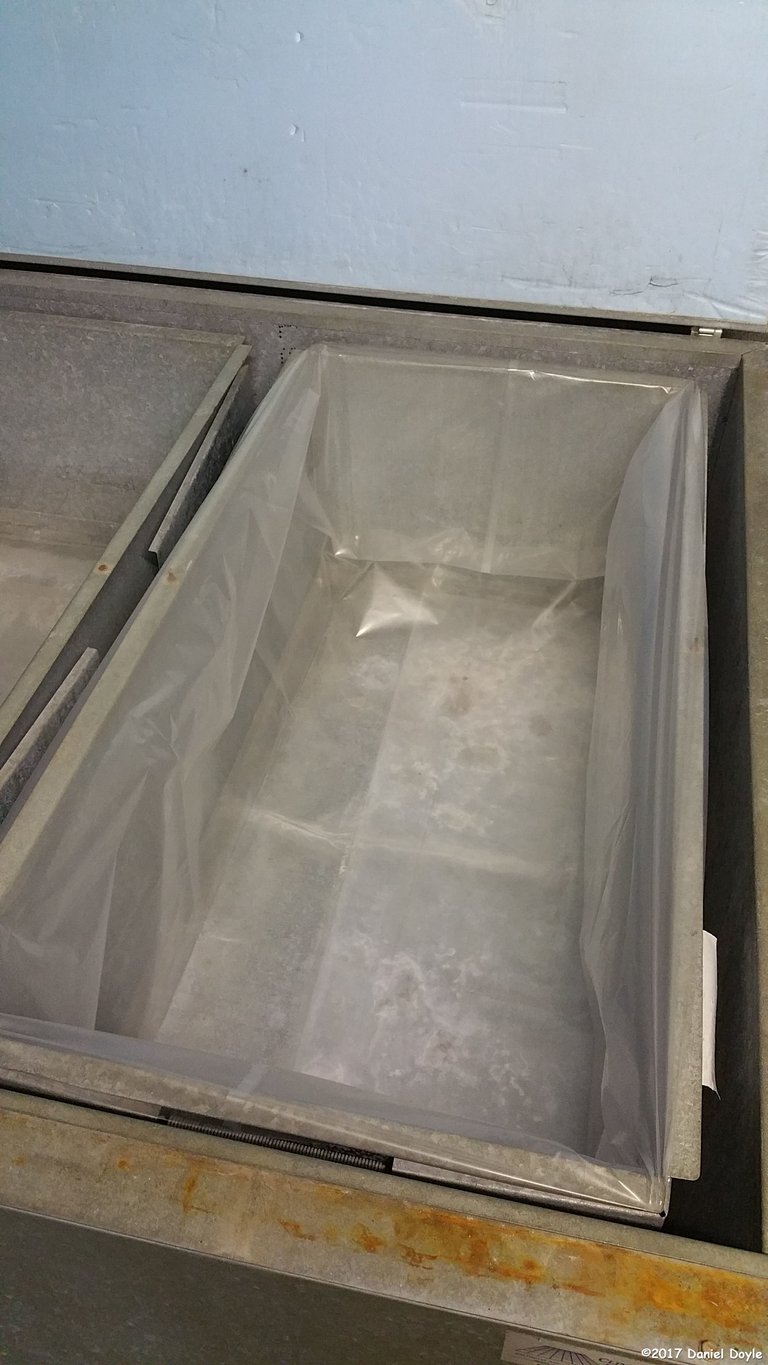
Once installed it can still look a bit loose but the water will smooth it out into the corners.
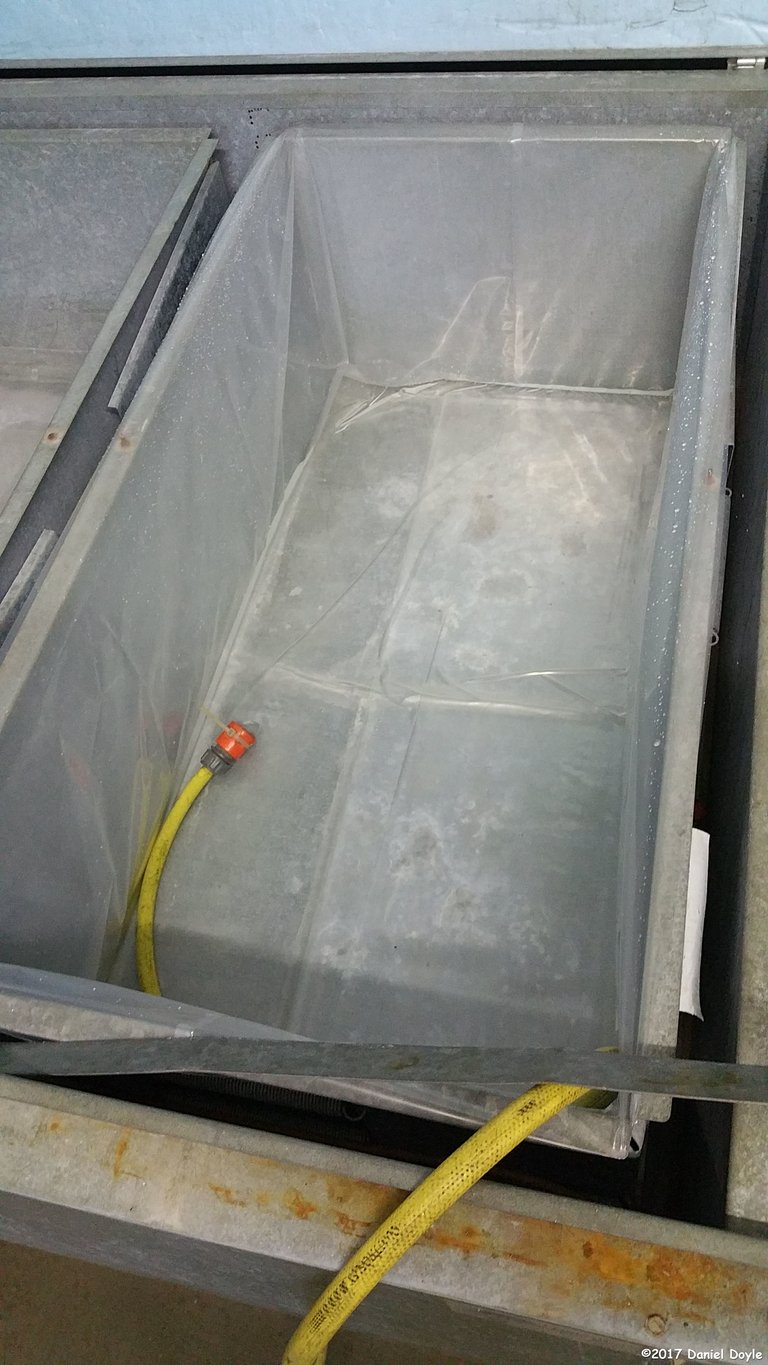
It can be filled with water from a normal tap but the better the quality of water the better the ice will be. Any impurities like high lime content or dirt will affect the ice clarity. Luckily most of it will come to the top while freezing. Water with high lime can produce a layer of white ice on top when done. This can be cut away.

The machine makes two blocks at a time each 1 meter by 50cm by 25cm. That is a lot of water and a lot of weight.
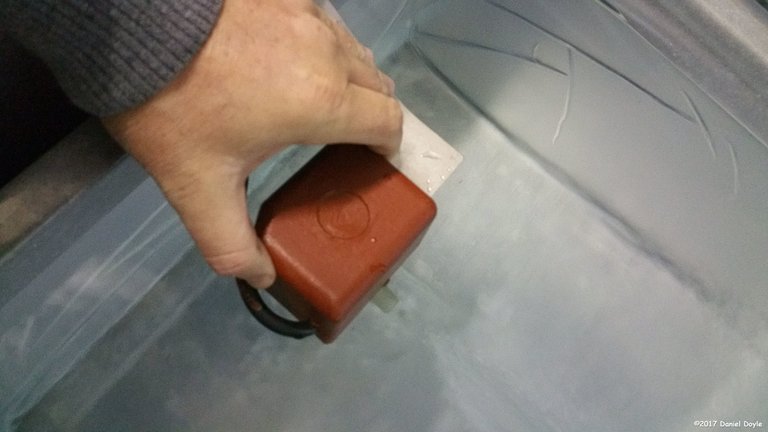
Then comes the real hero of the show, a simple aquarium pump. This is clipped to the side of the bath of water and is slightly submerged below the surface. This pumps the water around and stops it from freezing at the top
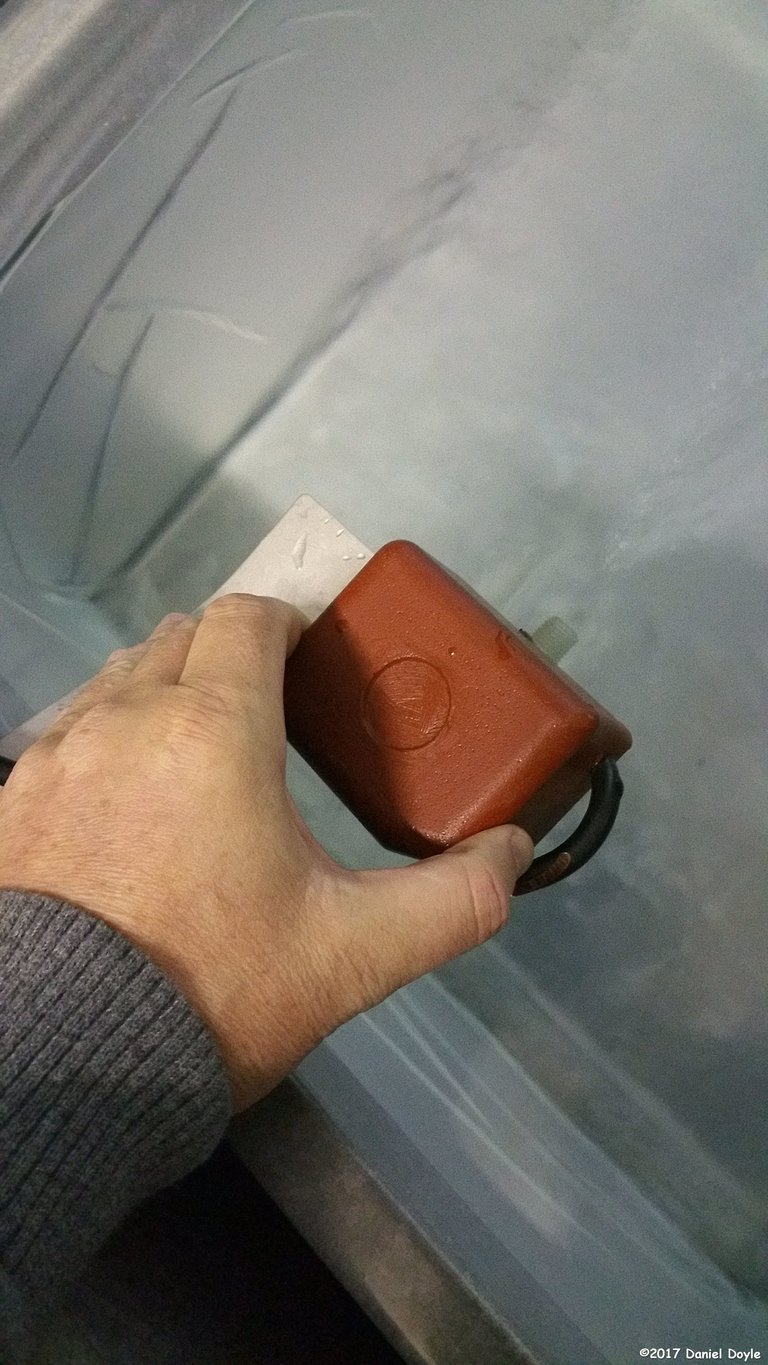
Because the water is constantly moving it can only freeze at the bottom and over the course of about three days all the water will do so to a clear solid mass.
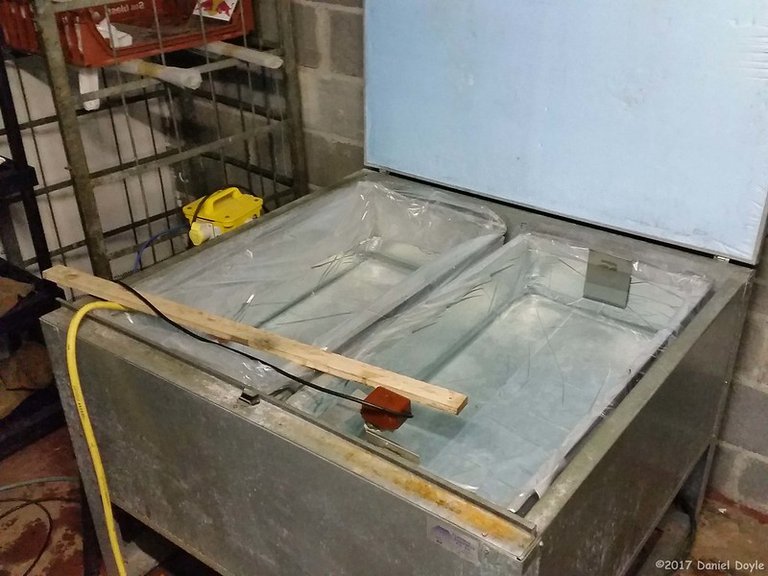
Note to self
The last piece of the process before turning on the machine is to add lifting plates to the ends of the baths. These stainless steel plates have a hooked edge which will freeze into the ice and allow you to lift the block out when done.

These are very important as to forget them means you are screwed. Of course, I speak from experience and even though I worked out a way to get the blocks out it wasn't pretty.
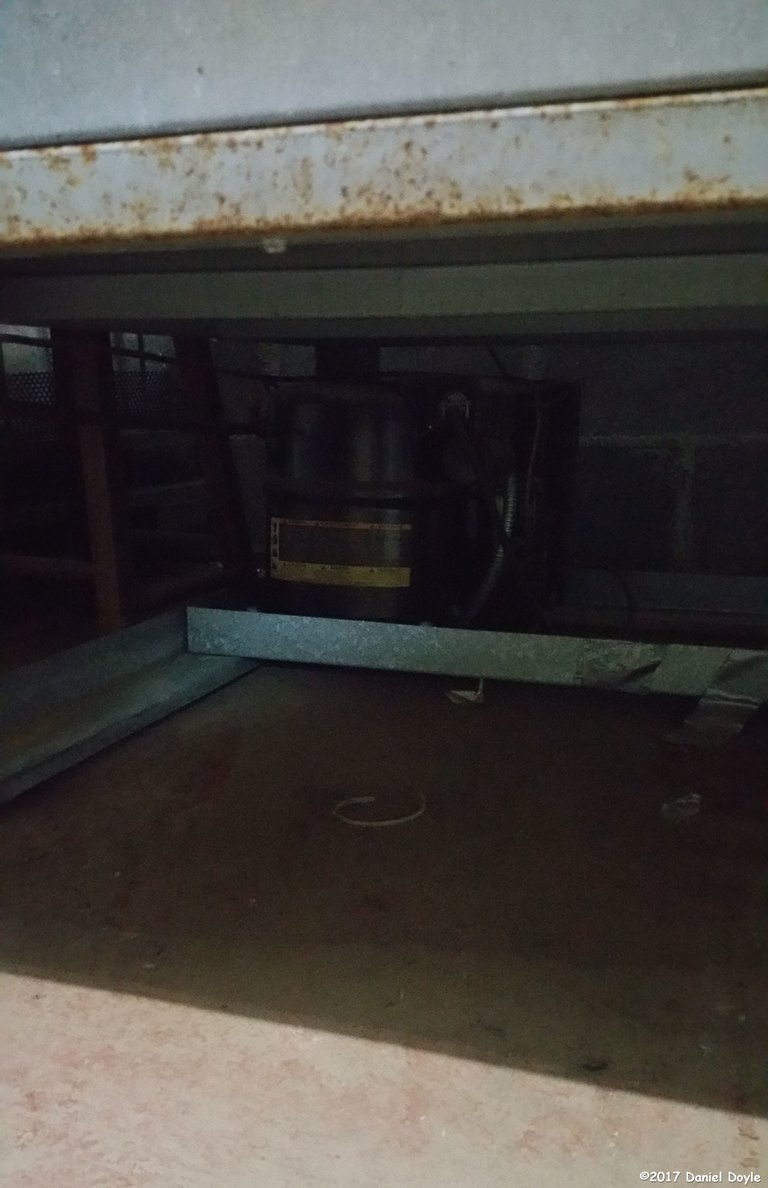
All you do then is switch on the machine and pumps and walk away for a few days till they are ready. The machine will just do its thing. The refrigeration unit is quite small and sits below the machine.
Bonus info
If you want to freeze something into the ice you can come back half way through and add the element into the machine on top of the already frozen ice. This could be a flower of anything else you could dream of. The ice would then continue to freeze around it and it will appear suspended inside.

Harvest time
The day has arrived and your block is ready. It is good to catch it early before all the water is frozen and the little pump is not frozen in place. The freezing time depends on the ambient temperature but in my experience, it is around 3 days.
You turn off the machine and syphon away the extra water hopefully there will only be around 1 inch 2.5cm left on the surface remove the pump and you are ready to lift the block. I use a block and tackle connected to a crane structure. There is a lifting bar that slides into those plates Which I didn't forget and all is ready to go.
You pull the spring-loaded sides of the box away from the ice to lossen it, take the plastic liner off the sides and begin to pull the chain. If all goes well the block will raise up out of the bath.

This is a scary part as to have the block drop on you would not be fun. The whole crane pulls out away from the machine bag and all.
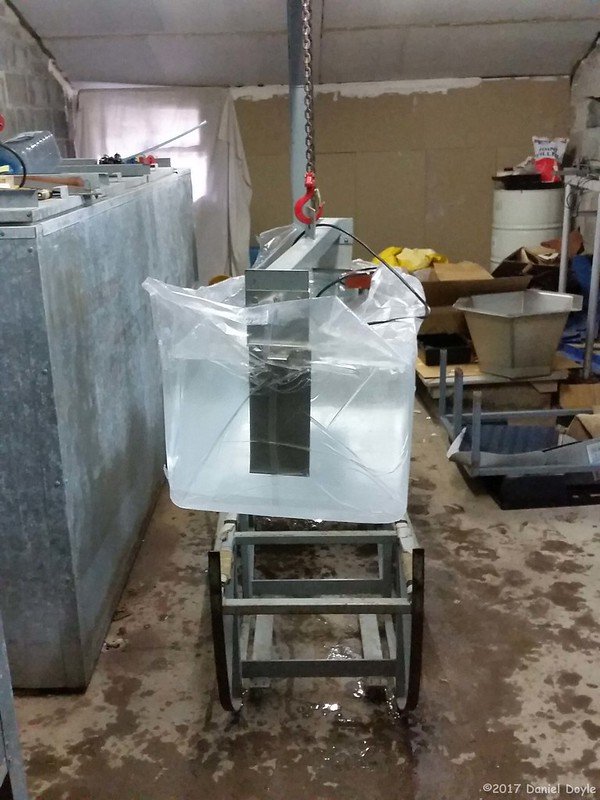
In this image you can see the stain steel plates frozen in the ice. Quickly, you lower the block onto a waiting dolly and breathe a sigh of relief. You survived another lift.
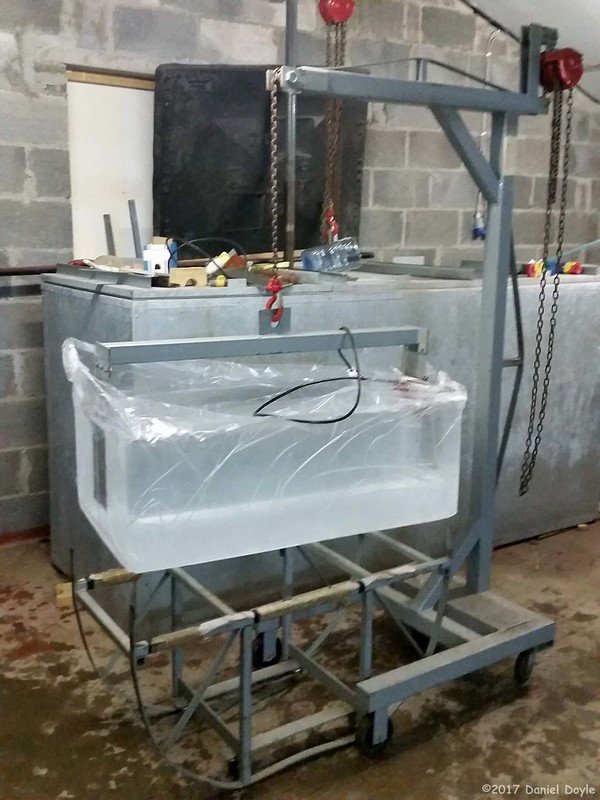
The dolly is on wheels also and with curves at each end it allows you to stand the block up straight ready for carving. Before you do that it is best to chisel out the plates and the water pump if it got stuck.
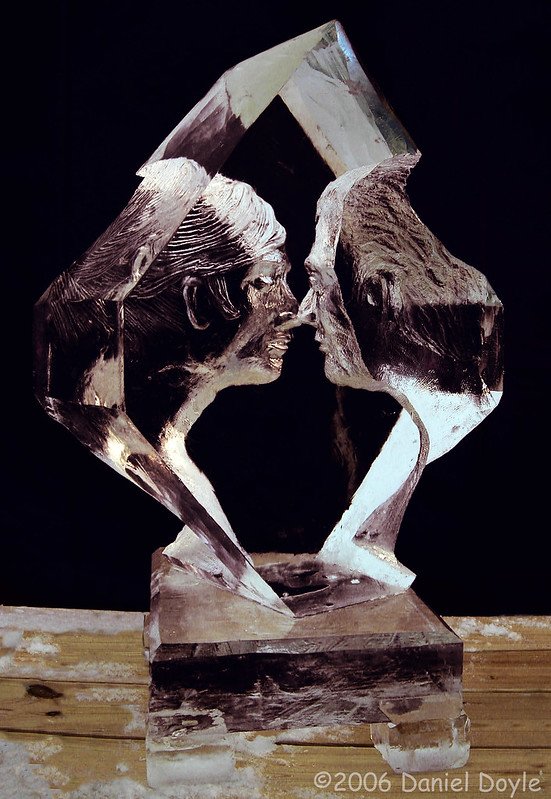
Here's one I prepared earlier
If all went well you should have a crystal clear block of ice. I include this one made into a sculpture mainly so this post can have a nicer thumbnail than just some boring gray machine but you can see the possibilities clear ice can open up. These faces were carved in negative inside the block. You can read all about it in This post You really get to play with light and space.
Well, I think that is all there is to say on the subject. I really wrote this post so I will have somewhere to point people to if they ask me about how ice is made and maybe it is a good bit of knowledge to know for a quiz question. Hope you weren't too bored in the end.

Ps
Thanks for reading. I use PeakD to document my work as an ephemeral Sculptor of sand, snow and ice, amongst other things. This will hopefully give it a new life on the Hive Blockchain.
I hope you'll join me again soon
@ammonite
I am also starting to create NFTs of my sculptures and welcome you to my gallery where you can own a bit of ephemeral sculpture history.

Fascinating! I hadn't really thought about it but certainly the ice that forms in my freezer would not look great in a carving... If it's not completely white, it's at least deeply foggy.
It is a clever machine and to see an iceblock standing in front of you that is crystal clear is really like you have captured a bit of space. The largest man-made blocks are around 2 meters by 1 meter by 75cm which are what we use on the bigger projects.
Oh mehn that's so much information break down!
I actually thought about how scary the lifting out part will be.
I like the dedicated process you use in making your own ice and it's amazing.
I have been thinking in my mind the whole time, please how do you preserve an ice sculpture?
Lifting out the ice block is always scary but so far I've never had a disaster.
How long the sculpture lasts really depends on the environment. In the freezing cold of Siberia etc it can last several weeks but even the air flow around it will melt it away eventually. If I were to do one for a party it would last the whole evening slowly getting shinier and smaller. For these types of sculptures, I make everything a bit bigger and let it melt away to its final form.
There is no way of preserving it and to me, that is part of the fun.
Oohh.. I now get the ephemeral thing.
It's just like building sand houses when I was a kid, it was just for the moment and it was fun.
Your NFT gallery is fire, I like the "Robot of future's past" sand sculpture, it's so spectacular and filled with details.
I hope to grow and find the space and time to practice art to my liking.
Your works are motivational. ❤️
Thanks for your nice comment. I am glad you liked my work and thanks for the question. Keep doing what you're doing I really like your drawings and paintings, you have a great eye.
I really appreciate comments like this! Thank you so much.
Wow, this is so cool
Thank you very much.
Is it one of those closely guarded secrets because some people like maintaining a delusion of superiority or is it a "closely guarded secret" in that it's so obvious (when you know how) that everyone mistakenly believes everyone else already knows how it's done so no explanations are ever bothered with? XD
this latter one feels like a very common problem in 3d x_x
It was pretty cool having confirmed my suspicion that giant ice blocks are actually made in a giant ice block maker XD Though getting the ice out looks terrifying :O
I think it is a closely guarded secret because nobody bothered to ask. But I also think that some people like to keep the magicians' secrets secret. For me, knowledge is always a good thing. And I remember before I bought my own machine I could not find any info on what I was buying for the hefty price. Looking at it now I see it is not rocket science and something that a good DIYer could even build themself.
Taking the block out always scares me especially since I am usually far away from help if anything goes wrong.
Creating an ice block sculpture is a unique and intricate art form, capturing the transient beauty of ice. For those inspired to try this craft and looking for the right equipment, it's crucial to start with the best ice machine. Exploring different types of ice machines is essential, as each can offer unique benefits for sculpting. A detailed guide on selecting the right ice machine for your artistic endeavors can be found here: https://bftech.pro/ice-machine-types/ . This resource can help you choose the perfect machine to bring your ice sculptures to life.